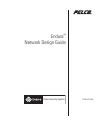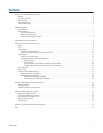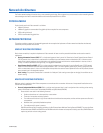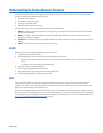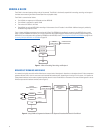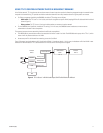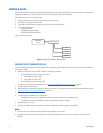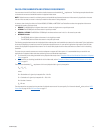
C1640M-B (3/06) 9
Understanding the Endura Network Structure
The primary structure of an Endura network topology is organized into functional entities, which are called “blocks.” Grouping the functional
entities into individual blocks provide the following benefits:
• Blocks control and isolate traffic.
• Block design can be physical or logical.
• Each block is separated by VLANs.
• Blocks help determine network requirements.
The block concept makes it easy to understand and implement the Endura network design.
• A Block: The A Block is functionally responsible for encoding, recording, and storage of the video streams entering the Endura network
(both live and playback video).
• B Block: The B Block is functionally responsible for decoding and displaying the video streams, as well as providing the control and
configuration of all Endura components.
• Core Block: The Core Block is functionally responsible for Network layer 3 tasks, authentication and security, and interconnects the A and
B blocks.
• C Block: The C Block includes the entire block structure: A, B, and Core.
VLANS
VLANs are an essential network topology requirement in the Endura network.
• Each Endura block is separated by VLANs.
• VLANs are groupings of switch ports creating different network segments for each group.
– Switches using VLANs create the same division of the network into separate broadcast domains are also a more cost-effective
solution.
– It is necessary to use a router when moving between VLANs.
• VLANs reduce the size of the broadcast domain.
• VLANs are used to managed and restrict Endura traffic.
• VLANs operate at layer 2 of the Open System Interconnection (OSI) model.
• All VLANs should be assigned an IP address to support routing.
UPnP
Endura uses UPnP to enable easy and dynamic connectivity between devices on a network. Devices may dynamically add themselves to a
network without the need for user intervention or configuration. UPnP also allows devices on the network to check in with each other
periodically. This means the user can know which devices are available at any one time. If a device goes off line, users can be notified so the
problem may be addressed quickly, with minimal down time.
UPnP traffic stays isolated to VLANs because of Time-To-Live (TTL) settings. TTL determines how many network segments a packet can cross into
before it is discarded. TTL for UPnP packets is set to 1 so that the UPnP packets do not cross out of their originating block. TTL for video packets
is set much higher so that the video packets can traverse the entire network. For more information on TTL is used in the Endura network, refer to
Using TTL to Control Network Traffic in Broadcast Domains on page 11.



